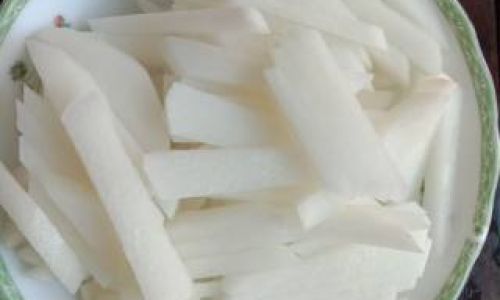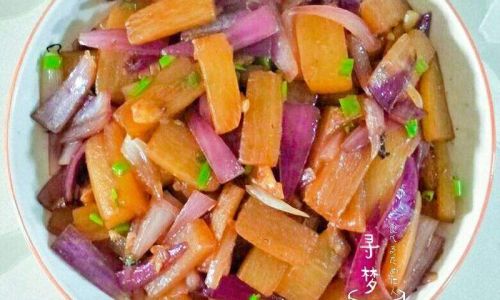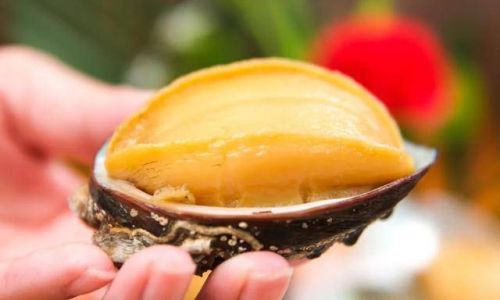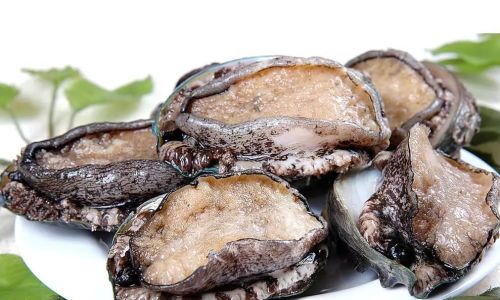Stir-frying, a cornerstone of Asian cuisine, transforms simple ingredients into flavorful dishes within minutes. Among the many vegetables that shine in this cooking method, daikon radish—a crisp, mildly peppery root vegetable—stands out for its versatility and health benefits. This article delves into the techniques, tips, and cultural significance of stir-fried daikon radish, offering a detailed roadmap to perfecting this dish at home.

Understanding Daikon Radish
Daikon radish (Raphanus sativus var. longipinnatus), often referred to as white radish, Japanese radish, or Chinese radish, is a staple in East Asian, Southeast Asian, and Indian cuisines. Its elongated shape, ivory-white flesh, and crunchy texture make it ideal for stir-fries, pickles, soups, and salads. Nutritionally, daikon is low in calories but rich in vitamin C, fiber, and antioxidants, making it a healthy addition to any meal.
When stir-fried, daikon’s natural sweetness emerges, while its crispness softens slightly, creating a delightful contrast of textures. The key to achieving perfection lies in balancing cooking time, heat, and seasonings.
Essential Ingredients and Tools
To prepare stir-fried daikon radish, gather the following:
- 1 medium daikon radish (approx. 500g): Choose a firm, unblemished root with vibrant green leaves (if attached).
- 2 tbsp cooking oil: Neutral oils like vegetable, canola, or peanut work best.
- 3 garlic cloves, minced: For aromatic depth.
- 1-inch ginger, julienned: Adds a subtle warmth.
- 1 tbsp soy sauce: Enhances umami flavor.
- 1 tsp sesame oil (optional): For a nutty finish.
- 1 tsp sugar (optional): Balances bitterness.
- 1/4 cup water or stock: Aids in even cooking.
- Salt and pepper: To taste.
- Garnishes: Sliced green onions, sesame seeds, or chili flakes (optional).
Tools:
- Wok or large skillet
- Chef’s knife and cutting board
- Vegetable peeler
- Spatula or wooden spoon
- Small bowl for seasonings
Preparation: From Root to Ready
-
Cleaning and Peeling:
Rinse the daikon under cold water to remove dirt. Trim both ends. Use a vegetable peeler to remove the tough outer skin, revealing the smooth, white flesh beneath.
-
Slicing Techniques:
The way you cut daikon affects cooking time and texture:- Julienne: Slice into matchsticks for quick, even cooking.
- Half-moons: Cut the radish into 1/4-inch-thick rounds, then halve or quarter them.
- Diagonal slices: Create oval-shaped pieces for visual appeal.
Aim for uniformity to ensure consistent doneness.
-
Marinating (Optional):
For added flavor, toss the daikon slices with a pinch of salt and let them sit for 10 minutes. Rinse and pat dry to remove excess moisture.
The Stir-Frying Process: Step by Step
Stir-frying demands precision and high heat. Follow these steps for optimal results:
-
Heat the Wok:
Place the wok over high heat until it begins to smoke. Add the oil and swirl to coat the surface. Proper preheating prevents sticking and sears the vegetables quickly.
-
Aromatics First:
Add the minced garlic and ginger to the hot oil. Stir constantly for 30 seconds until fragrant but not browned. Burnt garlic imparts bitterness, so act swiftly. -
Introduce the Daikon:
Toss the daikon slices into the wok. Use a spatula to spread them into a single layer, ensuring direct contact with the heat. Let them sizzle undisturbed for 1–2 minutes to develop a slight char. -
Stir and Season:
Toss the daikon vigorously to coat it with the aromatics. Add soy sauce, sugar (if using), and a splash of water. Cover the wok briefly to steam-cook the radish, softening it without losing crunch. -
Adjust Consistency:
If the pan dries out, add more water or stock in small increments. The goal is to cook the daikon until tender-crisp—a fork should pierce it with slight resistance. -
Final Touches:
Drizzle with sesame oil and adjust seasoning with salt and pepper. For a spicy kick, sprinkle chili flakes. Transfer to a serving dish and garnish with green onions or sesame seeds.
Pro Tips for Perfect Stir-Fried Daikon
- High Heat is Key: Maintain a fierce flame to preserve texture and prevent sogginess.
- Avoid Overcrowding: Cook in batches if necessary. Overcrowding the wok steams rather than stir-fries the vegetables.
- Balance Flavors: Daikon’s mild taste benefits from bold seasonings. Experiment with oyster sauce, rice vinegar, or a dash of mirin.
- Textural Contrast: For added crunch, stir in rehydrated wood ear mushrooms or water chestnuts during the final minute.
- Vegan Variations: Substitute soy sauce with tamari or coconut aminos. Add tofu for protein.
Cultural and Regional Variations
Stir-fried daikon radish adapts to regional palates:
- Chinese Cuisine: Often paired with pork or shrimp, seasoned with Shaoxing wine and a touch of sugar.
- Japanese Cooking: Simplified with dashi stock and a drizzle of soy sauce, served as daikon no itame.
- Korean Dishes: Combined with gochujang and kimchi for a spicy-sour twist.
- Indian Preparations: Spiced with turmeric, cumin, and mustard seeds in a style akin to mooli ki sabzi.
Health Benefits and Nutritional Profile
Beyond its culinary appeal, daikon radish offers:
- Digestive Aid: Enzymes like diastase support metabolism and alleviate bloating.
- Immune Support: High vitamin C content combats free radicals.
- Hydration: With 95% water content, it’s a refreshing, low-calorie snack.
- Detoxification: Compounds like sulforaphane aid liver function.
Troubleshooting Common Issues
- Mushy Daikon: Overcooking. Reduce heat and cooking time.
- Bland Flavor: Increase aromatics or add a splash of vinegar for brightness.
- Burnt Garlic: Lower the heat when sautéing aromatics.
- Oily Residue: Use a slotted spoon to drain excess oil before serving.
Serving Suggestions
Stir-fried daikon pairs wonderfully with:
- Steamed jasmine rice or quinoa.
- Noodle dishes like chow mein or udon.
- Grilled meats or tofu.
- As a filling for spring rolls or lettuce wraps.
Conclusion
Stir-fried daikon radish is a testament to the beauty of simplicity in cooking. With minimal ingredients and technique, this dish elevates a humble root vegetable into a culinary masterpiece. Whether you’re a novice cook or a seasoned chef, mastering this recipe opens doors to endless variations and cultural explorations. So grab your wok, sharpen your knife, and let the sizzle of daikon radish fill your kitchen with the aromas of tradition and innovation.
Final Tip: Practice makes perfect. Adjust seasonings and cooking times to suit your taste, and soon, stir-fried daikon will become a staple in your repertoire. Bon appétit!







0 comments